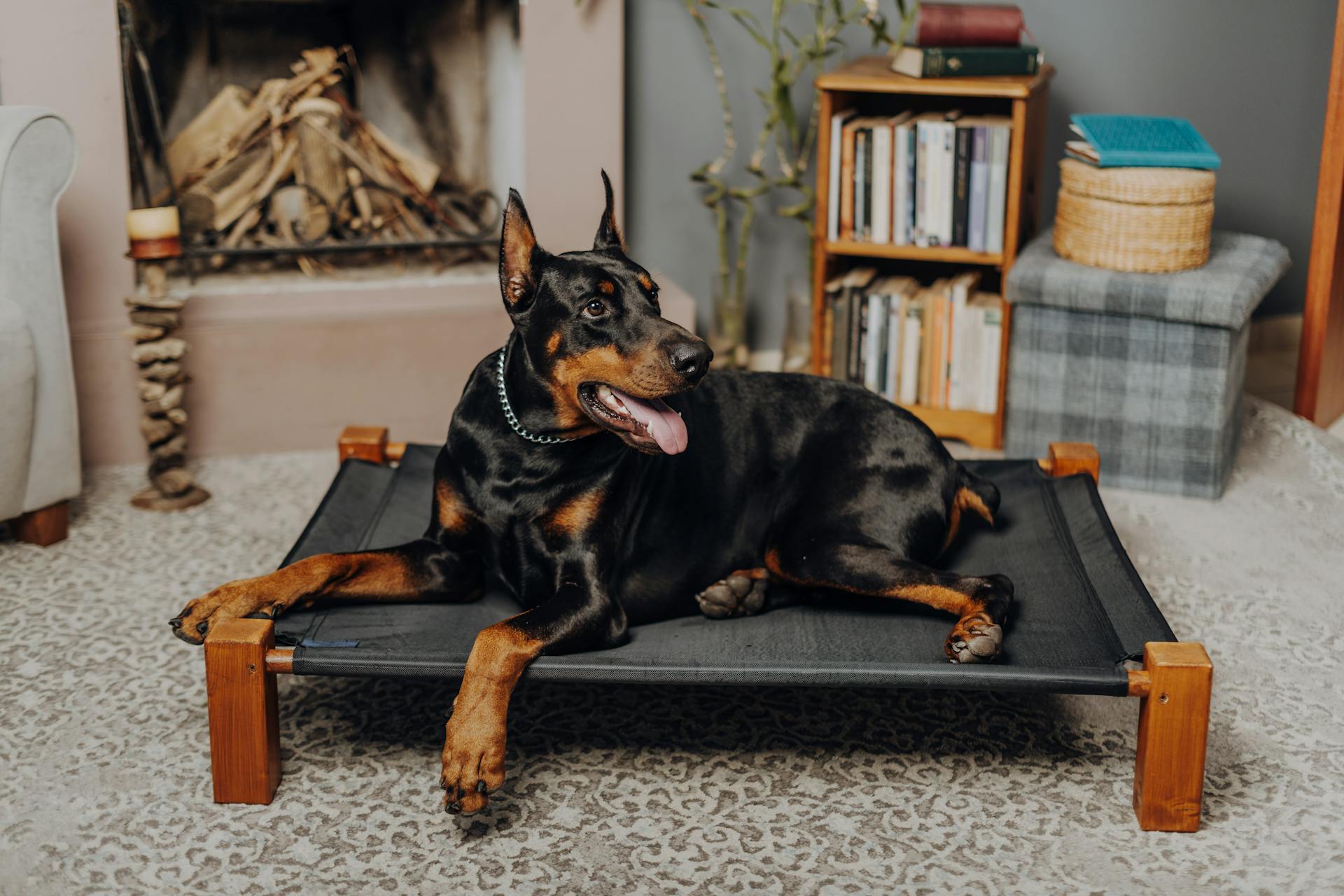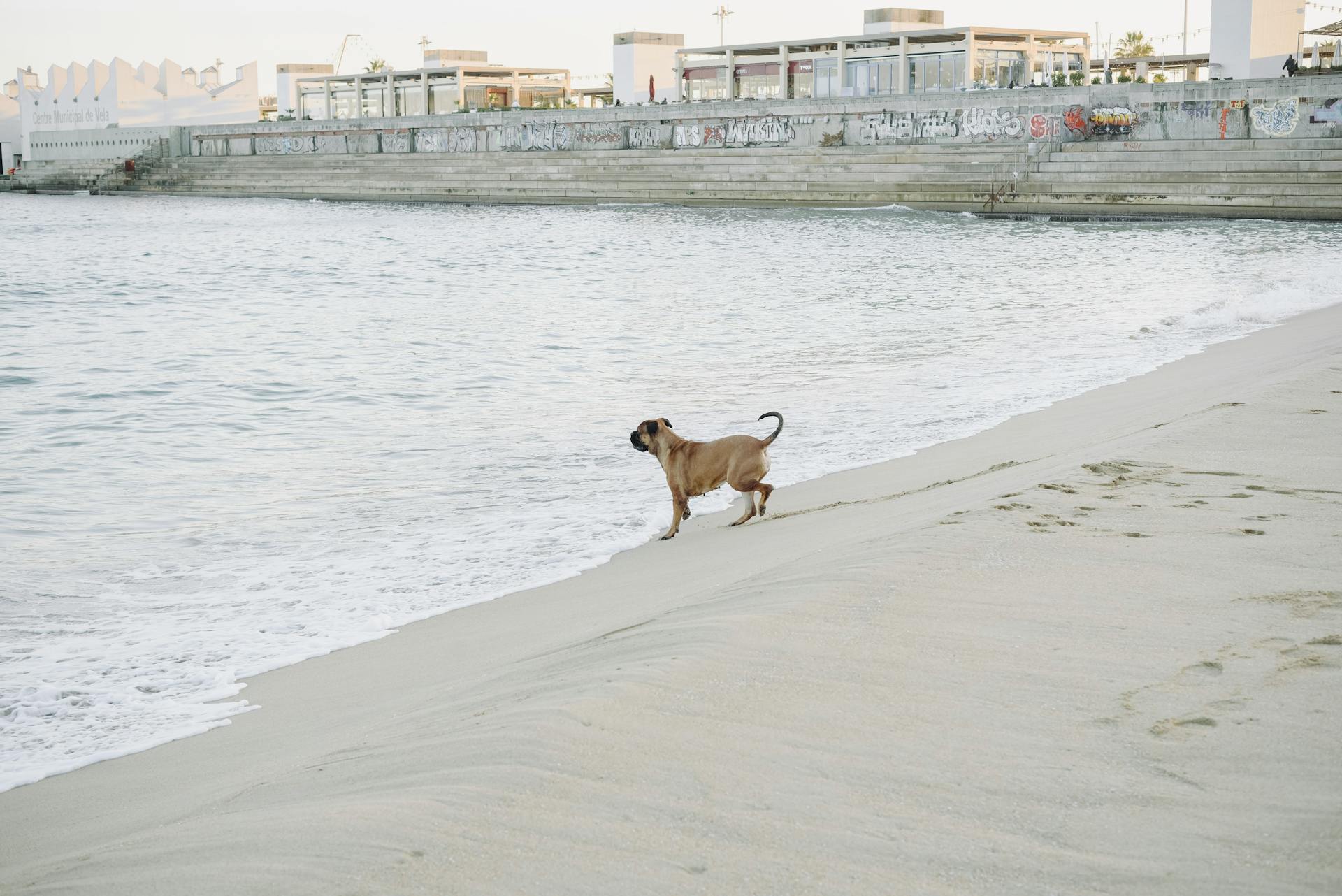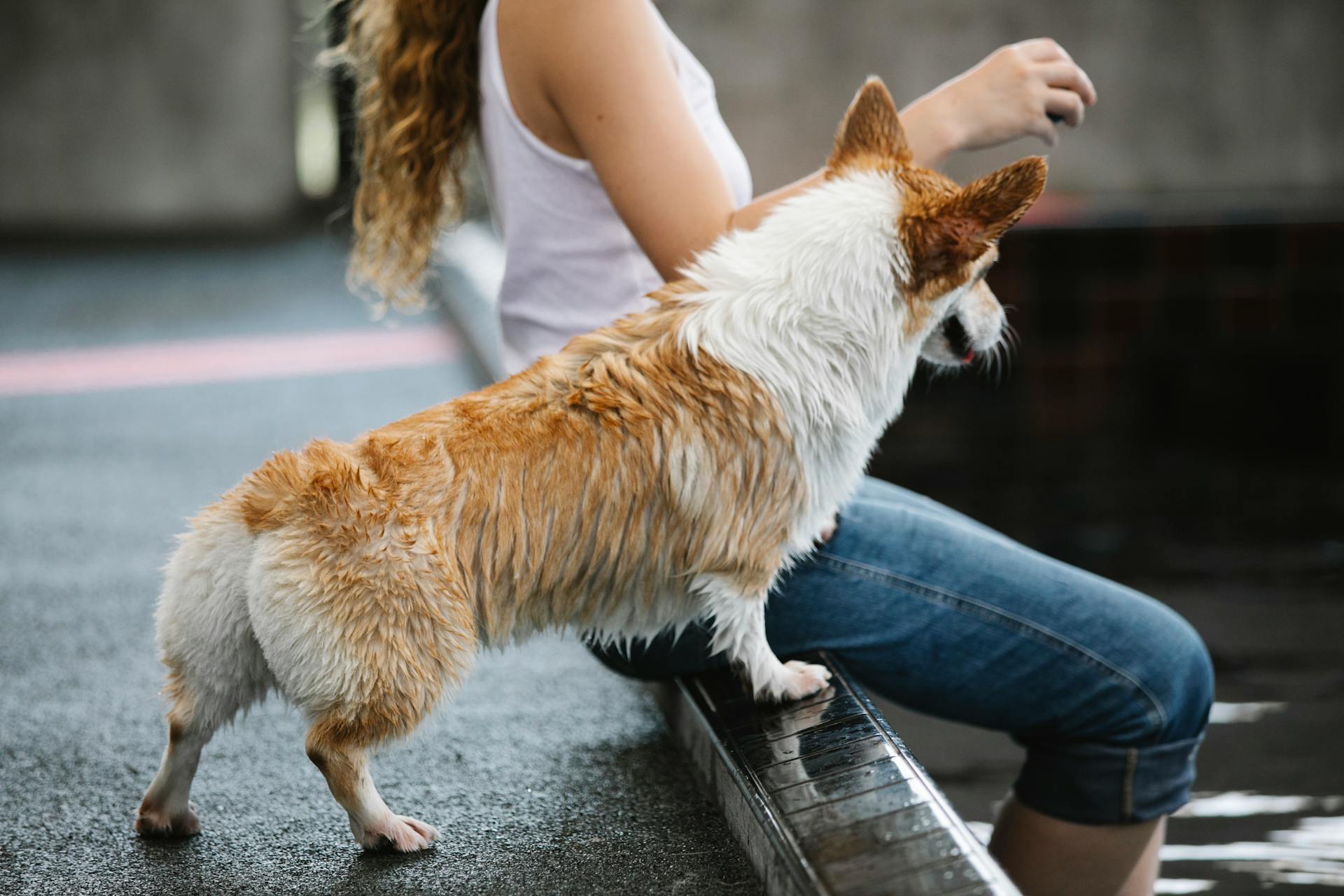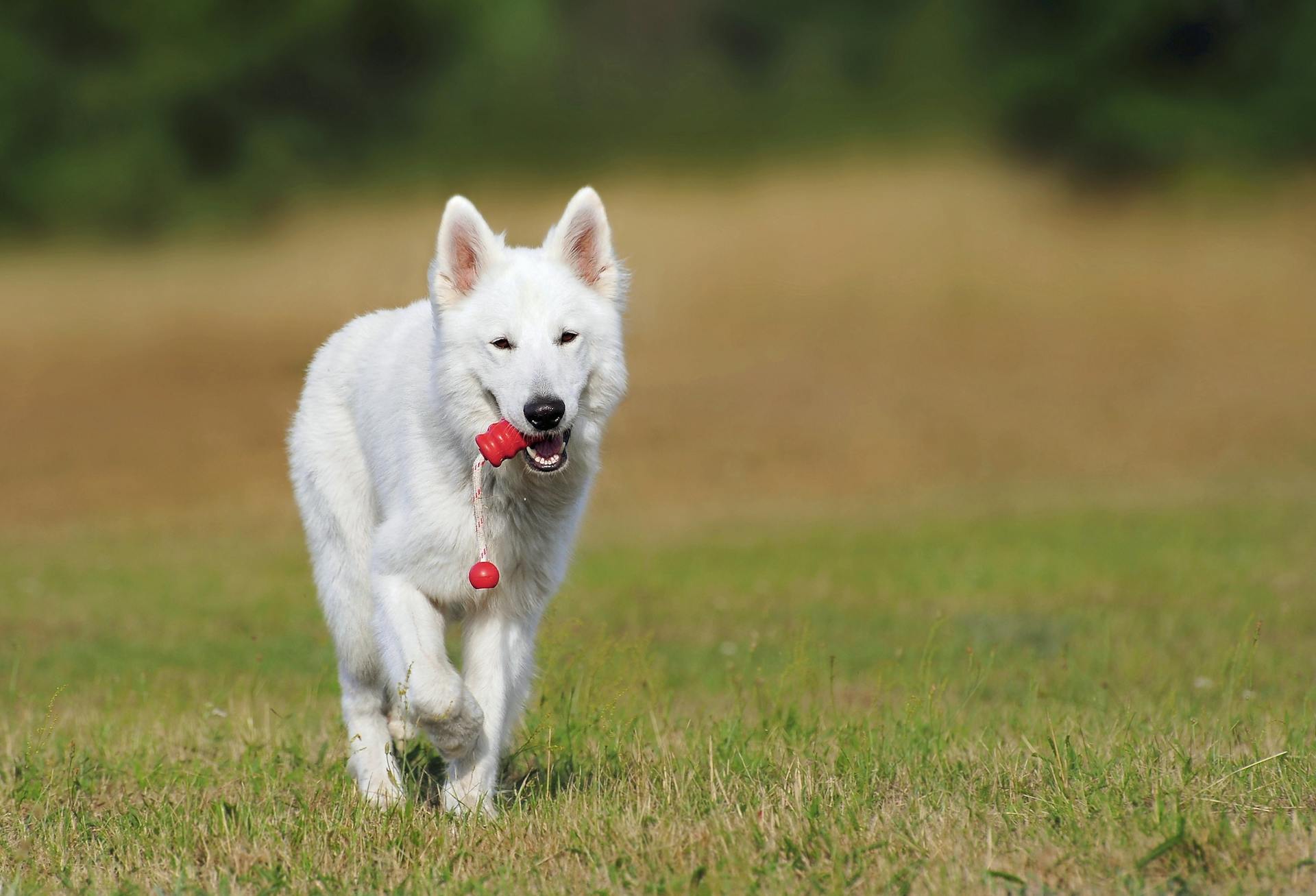
The Bullmastiff is a powerful and intimidating breed that makes an excellent guard dog. They are known for their loyalty and protective instincts, which make them a great addition to families who want to keep their homes and loved ones safe.
Bullmastiffs are naturally suspicious of strangers, which makes them excellent watchdogs. They will often alert you to potential threats with a loud bark.
Their size and strength can be intimidating, but they are also gentle and loving with their families. With proper training and socialization, Bullmastiffs can be wonderful companions.
Bullmastiffs typically weigh between 110 and 130 pounds and stand between 24 and 27 inches tall at the shoulder.
Bullmastiff Basics
The Bullmastiff's origins date back to the mid-nineteenth century, when the landed gentry needed a fearsome guard dog to protect their estates.
The breed was created by crossing Mastiffs with the now-extinct Old English Bulldog, resulting in a dog with a unique combination of physical and personality traits.
Early studies showed that the Bullmastiff owed about 60% of its genetic makeup to the Mastiff, with the Bulldog contributing the remaining 40%.
The breed was designed to be powerful, fast, and courageous, with a coat color that aided in camouflage, particularly in darker shades like brindle.
Bullmastiffs are surprisingly quiet and stealthy, considering their size, making them effective guard dogs.
To ensure the breed's loyalty and obedience, breeders devoted effort to developing a dog with a loyal attitude towards its handler.
The Bullmastiff was recognized by the UK Kennel Club in 1924 and the American Kennel Club registry in 1933, after the breed's gene pool had stabilized.
You might like: What Is the American Bully
Guard Dog
The Bullmastiff is a natural guardian of the home and family, responding instantly if any threat arises. They were bred to be silent watchdogs, making barking an uncommon behavior for them.
Their fearless confidence and independence make them a formidable protector, but they're also intelligent and trainable. With proper socialization, they can grow up to be well-behaved and socially adept companions.
To be effective as a guard dog, Bullmastiffs require early socialization to become well-rounded adults. Enrolling them in puppy kindergarten classes is an excellent way to start their socialization journey.
Bullmastiffs were originally bred by gamekeepers on English estates to serve as courageous and strong protectors of the grounds. Their formidable appearance alone acts as a powerful deterrent to potential attackers or intruders.
Their calm and humorous demeanor makes them an excellent choice for families with older children, but their size may be overwhelming to toddlers, requiring supervision during interactions.
Physical Characteristics
The Bullmastiff is an imposing breed, with a broad head, dark brown eyes, and deep muzzle that exudes intelligence and boldness. Their high-set, V-shaped ears are a distinctive feature.
Males typically stand between 64-69 cm (25-27 in) tall at the withers, weighing 50-59 kg (110-130 lb), while females range in height and weight from 61-66 cm (24-26 in) and 41-50 kg (90-110 lb), respectively.
Their coat is short and reasonably dense, coming in a range of colors including brindle, red, and fawn.
Appearance
The Bullmastiff's appearance is a sight to behold. Their broad heads, dark brown eyes, and deep muzzles combine to portray a distinctly intelligent and bold expression.
Their coat is short and reasonably dense, coming in a range of colours including brindle, red, and fawn. White markings on the chest are common, but it's preferred that these markings are not pronounced.
The breed has a dark mask around the muzzle and eyes, giving them a striking appearance. The skull is large, with slight wrinkling of the skin of the forehead noticeable when the dog is attentive.
The eyes are in proportion to the head, dark and alert, and should convey intelligence and curiosity. The ears are triangular, folding over, medium in size, and set high on the side of the head.
The muzzle is broad and should not be overly short, being at least one-third the length of the skull. It's very common for Bullmastiffs to have an undershot jaw, which can be both comical and vaguely menacing.
Here are the typical height and weight ranges for Bullmastiffs:
Their neck is slightly arched due to its pronounced muscle mass, and is impressively wide. The back is not overly long with no hint of a dip, and with plenty of muscle also.
Size
The Bullmastiff is a large breed, with males typically measuring 25 to 27 inches at the shoulder. Males weigh between 110 to 130 pounds.
Females are slightly smaller, measuring 24 to 26 inches at the shoulder. They weigh between 100 to 120 pounds.
As a breed, Bullmastiffs grow quickly as puppies and can become quite large, but surprisingly, they adapt well to apartment life with regular time outside.
For more insights, see: Police Dogs Breed
Coat Color and Grooming
The Bullmastiff's coat is a key part of its overall appearance, and it's relatively easy to maintain.
The breed comes in three main colors: red, fawn, and brindle. The brindle coat is a dark, almost-tiger striped pattern that was highly valued by gamekeepers for its camouflage abilities.
Bullmastiffs have a short, dense coat that sheds moderately, especially if they spend a lot of time indoors. Weekly brushing is usually all that's needed to keep their coat and skin in good condition.
A different take: Brindle Bull Mastiff

Bathing is rare, but if your Bullmastiff gets dirty or develops a strong doggy odor, a bath is in order. You can bathe them as needed, but be sure to use a gentle dog shampoo.
To prevent dental tartar buildup, it's essential to brush your Bullmastiff's teeth regularly. Daily brushing is ideal, but two to three times a week is a good minimum.
Here's a quick rundown of the Bullmastiff's grooming needs:
- Brush 2-3 times a week to remove dirt and excess hair
- Bathe every 1-2 months, or as needed
- Trim nails 1-2 times a month to prevent overgrowth
- Brush teeth 2-3 times a week to prevent tartar buildup
- Check ears regularly for wax or mites
Health and Care
Bullmastiffs are generally healthy, but like all breeds, they can be prone to certain health conditions. Regular check-ups and early treatment are crucial to maintaining their well-being.
Some common health issues include Hip Dysplasia, where the thighbone doesn't fit snugly into the hip joint, leading to pain and lameness in the rear legs. Elbow Dysplasia is also common in large-breed dogs and can cause painful lameness due to joint laxity.
Bullmastiffs are also prone to skin problems, with sensitive skin prone to rashes, sores, and irritations. It's essential to keep an eye out for these issues and address them promptly.
Here are some common health issues to be aware of in Bullmastiffs:
- Hip Dysplasia
- Elbow Dysplasia
- Skin Problems
- GDV (Bloat)
- Ruptured Anterior Cruciate Ligament
- Cancer
To keep your Bullmastiff healthy, it's essential to provide regular exercise, a balanced diet, and plenty of love and attention. With proper care and attention, they can live a long and happy life as a loyal companion.
Health and Conditions
Bullmastiffs are generally healthy dogs, but like all breeds, they can be prone to certain health conditions. Regular check-ups and early treatment are crucial to maintaining their well-being.
Some common health issues in Bullmastiffs include hip dysplasia, elbow dysplasia, and hypothyroidism. These conditions can cause pain, lameness, and other symptoms that can significantly impact their quality of life.
Bullmastiffs are also at risk for bloat, a life-threatening condition where the stomach distends with gas or air and twists. This requires immediate medical attention.
Here are some of the most common health issues in Bullmastiffs:
- Hip dysplasia
- Elbow dysplasia
- Hypothyroidism
- Bloat
- Subaortic stenosis
- Cystinuria
Cancer can also affect Bullmastiffs, with various types requiring different treatments. It's essential to work with a reputable breeder who has had their dogs tested for inherited health issues.
Skin problems are common in Bullmastiffs, with sensitive skin prone to rashes, sores, and irritations. Regular grooming and skin care can help prevent these issues.
With proper care and attention, many Bullmastiffs can live long and healthy lives, with a lifespan of seven to 10 years.
Broaden your view: Bullmastiff Health Problems
Care

Bullmastiffs are generally healthy, but they can be prone to certain health conditions. Regular check-ups and early treatment are crucial to maintaining their well-being.
A low-energy dog, Bullmastiffs adapt well to various home environments, but their size makes them best suited for a house with a fenced yard. This prevents them from roaming and protects them from traffic.
Exercise during the hottest parts of the day should be avoided, as their short muzzle makes them prone to heat exhaustion and heatstroke. Providing shade and fresh water when they're outdoors is essential.
Training should begin early, preferably when they are still a manageable size as a puppy. Enrolling in a puppy socialization class helps them learn to interact with other dogs and people.
Positive reinforcement is the best approach in training a Bullmastiff, as they respond well to encouragement but need a confident trainer. Avoid repetitive training to keep them engaged.
Curious to learn more? Check out: Stafford Bull Terrier Puppy

To maintain their weight, measure their food and feed them twice a day rather than leaving food out all the time. You should see a waistline when looking down at them.
Here are some key signs to look out for when monitoring your Bullmastiff's weight:
Dental hygiene is also crucial, with brushing their teeth at least two to three times a week preventing tartar buildup and periodontal disease.
Exercise and Training
Bullmastiffs need around 30-60 minutes of exercise daily, but avoid high-impact or strenuous workouts. Walks, outdoor play in a fenced-in area, and indoor enrichment can be sufficient to keep them at a healthy weight.
As young puppies, Bullmastiffs require gentle exercise, with a common rule being to exercise them for a minute a day per every week of life. This means a 12-week-old puppy would need 12 minutes of exercise per day, capping out at around 40-45 minutes during their first year.
To keep your Bullmastiff happy and healthy, make sure to provide them with daily moderate exercise, like brisk walks and playing fetch. This will help keep them in good health, especially since they tend to become couch potatoes as they get older.
Exercise

Exercise is crucial for Bullmastiffs, and it's essential to understand their specific needs to keep them healthy and happy. Bullmastiffs are prone to injuring themselves if overexerted, especially during their rapid growth phase as puppies.
As puppies, they need moderate exercise, with a common rule being to exercise them for a minute a day per every week of life. This means that a 12-week-old puppy would need 12 minutes of exercise.
Bullmastiffs need around 30-60 minutes of exercise daily as adults, but high-impact or strenuous workouts should be avoided. Instead, opt for walks, outdoor play in a fenced-in area, and indoor enrichment to keep them at a healthy weight.
Some Bullmastiffs may enjoy more vigorous exercise, especially those kept as indoor-only dogs in apartments. However, it's essential to keep an eye on the weather, as they may suffer in the warmest of temperatures.
A daily brisk walk and some playtime with fetch should be plenty of activity to keep your Bullmastiff in good health. They may not be built for endurance activities, but they love going for walks and patrolling their territory.

Make sure to get your Bullmastiff up and moving for around an hour every day, especially since they tend to be sedentary throughout the day while you're gone. A secure fence is also a must if you have a yard, as they'll chase animals and strangers that they perceive as threatening.
Training
Training your Bullmastiff requires a combination of techniques to keep them interested, as they can get bored with repetitive training sessions. Enrolling them in a socialisation course is an excellent first step, teaching them to tolerate and respect other people and dogs.
The breed enjoys being given a job to do, which makes them excellent agility dogs. Cart-pulling satisfies an instinctive urge to work and helps young dogs burn off excess energy.
Socialization and obedience classes are crucial for Bullmastiff puppies, and it's recommended to enroll them as soon as you bring them home. Their rapid growth makes this training even more essential.

Bullmastiffs can become powerful and imposingly large adults quickly, so it's essential to establish rules and boundaries early on. Don't let them do things as puppies that you don't want them to do as adults.
As long as they're adequately socialized and go through obedience training as puppies, Bullmastiffs can excel at following orders. They're excellent trackers and are surprisingly agile.
Temperament and Behavior
Bullmastiffs are naturally protective of their family and territory, relying on their intimidating appearance and size to scare intruders away.
Their instinct is to instill fear, not to cause physical harm, making them a great choice as a guard dog. They're not naturally big barkers or biters, and are more likely to pursue their targets quietly.
Bullmastiffs are intelligent dogs, and can learn to live in a variety of surroundings, but they do enjoy time spent cuddling with their humans. They're also emotionally sensitive, and will remember negative experiences for life.
Consistent training and leadership are essential to prevent them from becoming stubborn, but with positive socialization and education, they can become biddable and empathetic pets. They're eager to please and will thrive on clear rules and training.
These gentle giants are warm and affectionate family dogs, but may be wary of strangers and bark loudly or give chase to perceived threats. They're generally friendly and playful dogs, but can be protective of their family and territory.
Bullmastiffs have a natural want to please, and once the rules are clear, they make very trainable pets. They're also quite placid dogs, and do not pose a threat to people, but they do need to be socialized from an early age.
Puppies and Rescue
If you're considering bringing a Bullmastiff into your family, you have two main options: adopting a puppy or rescuing an adult dog.
You can usually locate adoptable Bullmastiff puppies or purebreds through breeders, but it's crucial to do your due diligence to find a reputable seller and a compatible dog for your family.
Socializing and training are essential for Bullmastiff puppies, especially since they can be challenging to manage when they reach over 100 pounds.
Fortunately, with proper attention and training, Bullmastiff puppies tend to be obedient and develop into even-tempered, well-behaved adults.
Rescuing a Bullmastiff can be a more complex process, as their past is often unknown, and they may have existing health conditions or behavioral issues.
Puppies
Finding the right puppy can be a challenge, especially with some breeds like the Bullmastiff, which have seen a decline in popularity over the past decade.
Bullmastiff puppies, for example, can be found through breeders, but it's essential to do your due diligence to find a reputable seller and a compatible dog for your family.
Socializing and training are crucial for Bullmastiff puppies, and instilling good habits like staying off the furniture must begin early, as they can be challenging to manage when they weigh over 100 pounds.
Bullmastiff puppies tend to be obedient with proper attention, but they do require training and frequent exposure to various people and animals to develop into even-tempered, well-behaved adults.
Health testing and temperament testing on the puppy and researching the parent's background are also essential to ensure a long, happy life with your new dog.
Rescue Groups
If you're considering adopting a Bullmastiff, you might want to look into rescue groups. They often have older, possibly unsocialized, untrained, and unwell dogs that need a second chance.
Bullmastiff rescue can be a lot of work, especially since their past is often shrouded in mystery. You won't know what they're sensitive to or their medical history.
The American Bullmastiff Association (AMA) is a reputable rescue group affiliated with the American Kennel Club. They have strict adoption policies and processes in place.
Bullmastiff Rescue of Canada is another excellent organization that focuses on the rehabilitation of the Bullmastiff breed. They're dedicated to giving these dogs a second chance at a happy life.
The AMA currently has three Bullmastiffs up for adoption who are being fostered by loving families - Jedi, Nina, and Mandy.
For another approach, see: Retired Police Dogs
Frequently Asked Questions
What is the most protective Mastiff?
The Bullmastiff is widely considered the most protective Mastiff breed due to its strong instinct to defend its family. Known for its loyalty and physical strength, it's a formidable guardian.
Featured Images: pexels.com